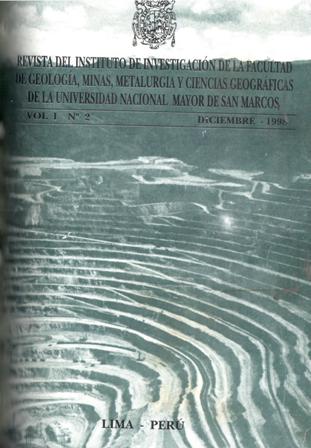Thermodynamic simulation of a pyro metallurgical process of oxidation of copper sulphide minerals
DOI:
https://doi.org/10.15381/iigeo.v1i2.2320Keywords:
thermodynamic simulation, conversion and merger processes, Noranda process, isasmelt process, metallurgical controlAbstract
Thermodynamic simulation models have been developed to observe the behavior of the minor elements Zn, Pb, As, Sb and Bi; as well as the major elements Cu, Fe, Si, 0 and S in the conversion and fusion processes: NORANDA and ISASMELT for the production of copper-rich mattes. The Noranda process shows a steady state model for obtaining a high-grade matte in metallic copper. The lsasmelt process is based on the concept of the two independent reaction sites in the bath (slag-killing interface): rapid oxidation and slow reduction. The heat balance of the process and the distribution thermodynamics of the minor elements are united and expressed in terms of the process variables such as temperature, enriched 02, composition of the charge, degree of matte and content of the magnetite in the Slag and other variables are incorporated into the modeling, which can predict the operating effects of chemical parameters and can also contribute to providing metallurgical control.
Downloads
Published
Issue
Section
License
Copyright (c) 1998 Pablo Nuñez Jara, Daniel F. Lovera Dávila

This work is licensed under a Creative Commons Attribution-NonCommercial-ShareAlike 4.0 International License.
AUTHORS RETAIN THEIR RIGHTS:
a. Authors retain their trade mark rights and patent, and also on any process or procedure described in the article.
b. Authors retain their right to share, copy, distribute, perform and publicly communicate their article (eg, to place their article in an institutional repository or publish it in a book), with an acknowledgment of its initial publication in the Rev. Inst. investig. Fac. minas metal cienc. geogr.
c. Authors retain theirs right to make a subsequent publication of their work, to use the article or any part thereof (eg a compilation of his papers, lecture notes, thesis, or a book), always indicating the source of publication (the originator of the work, journal, volume, number and date).























